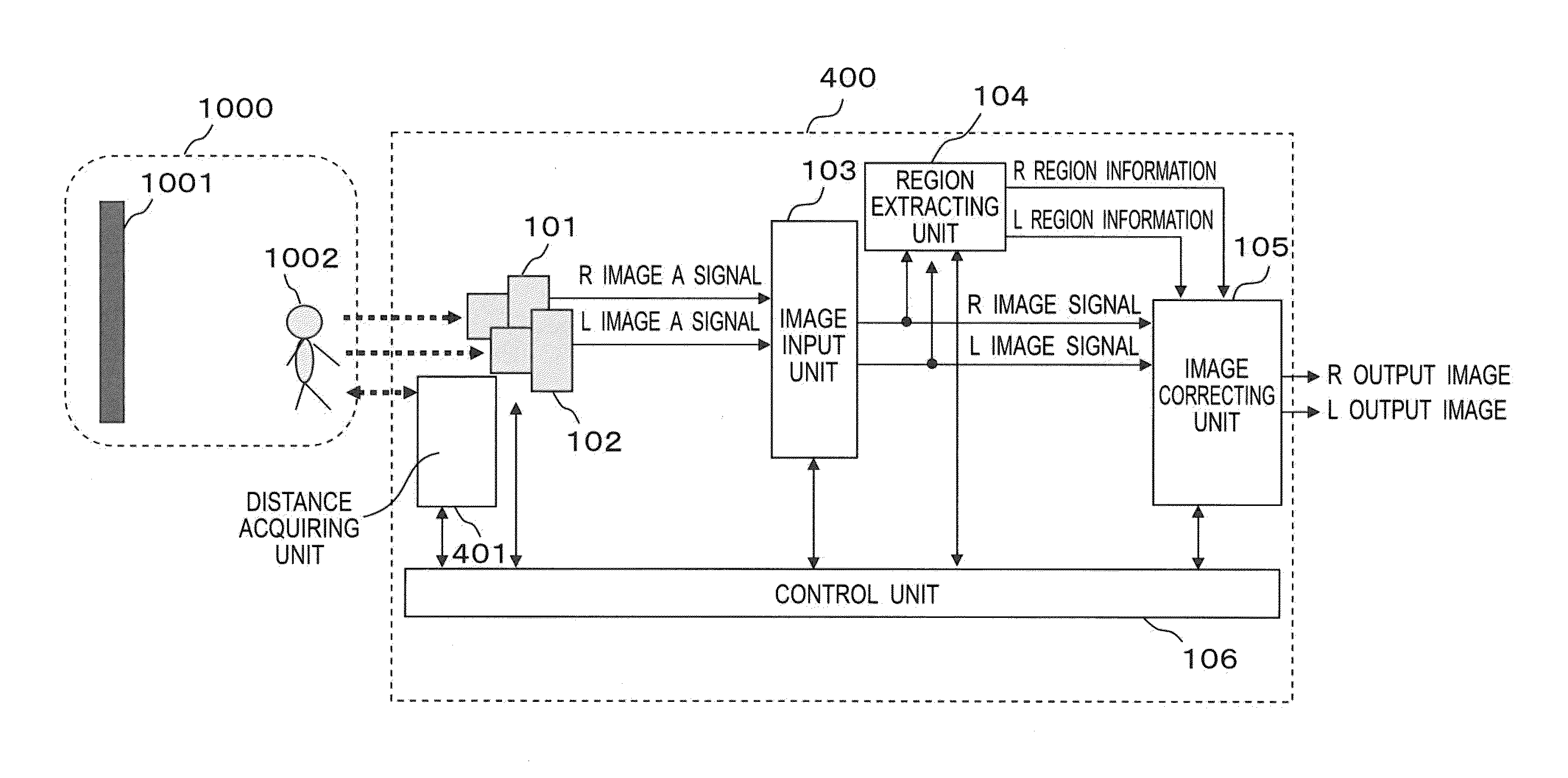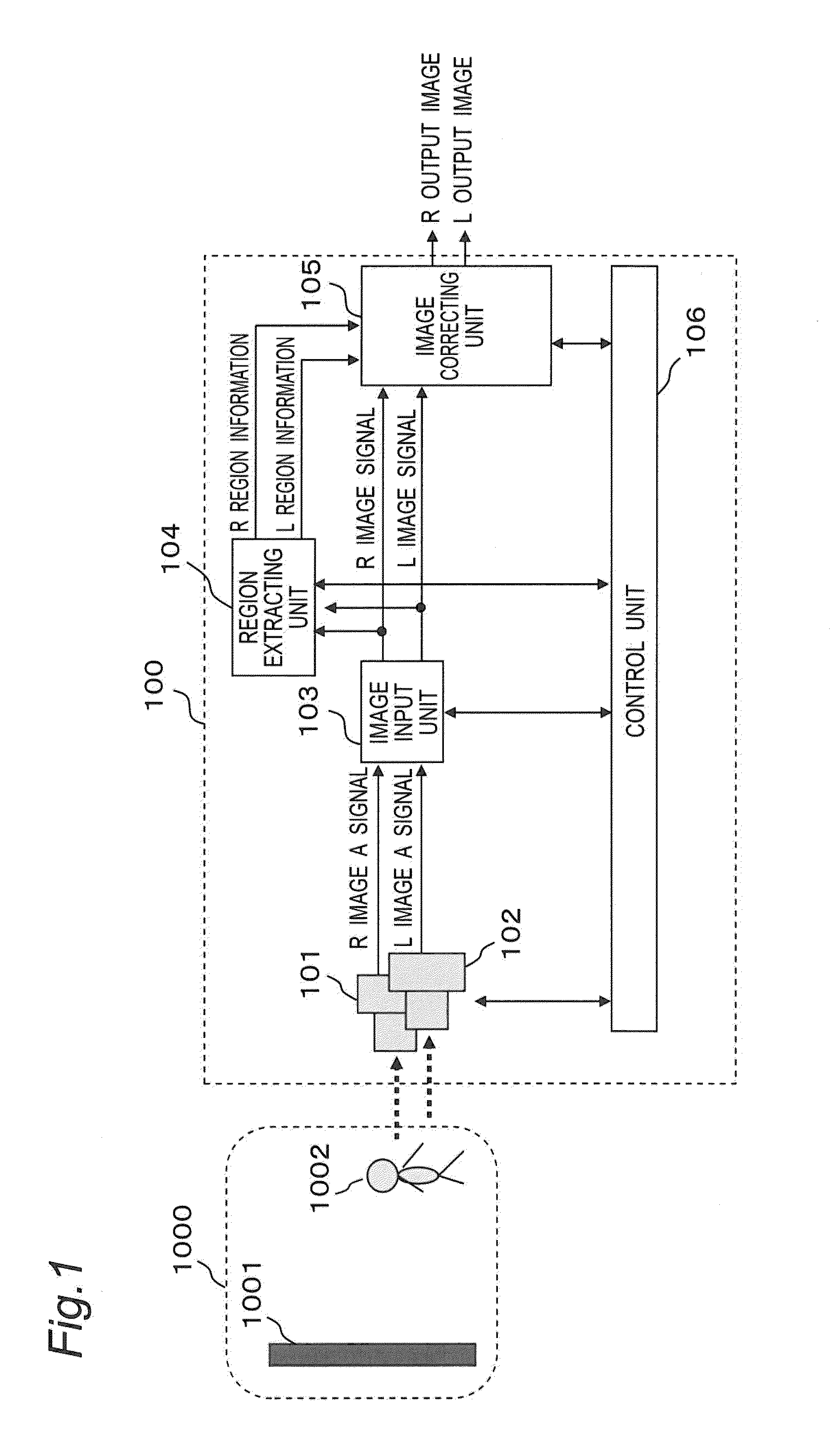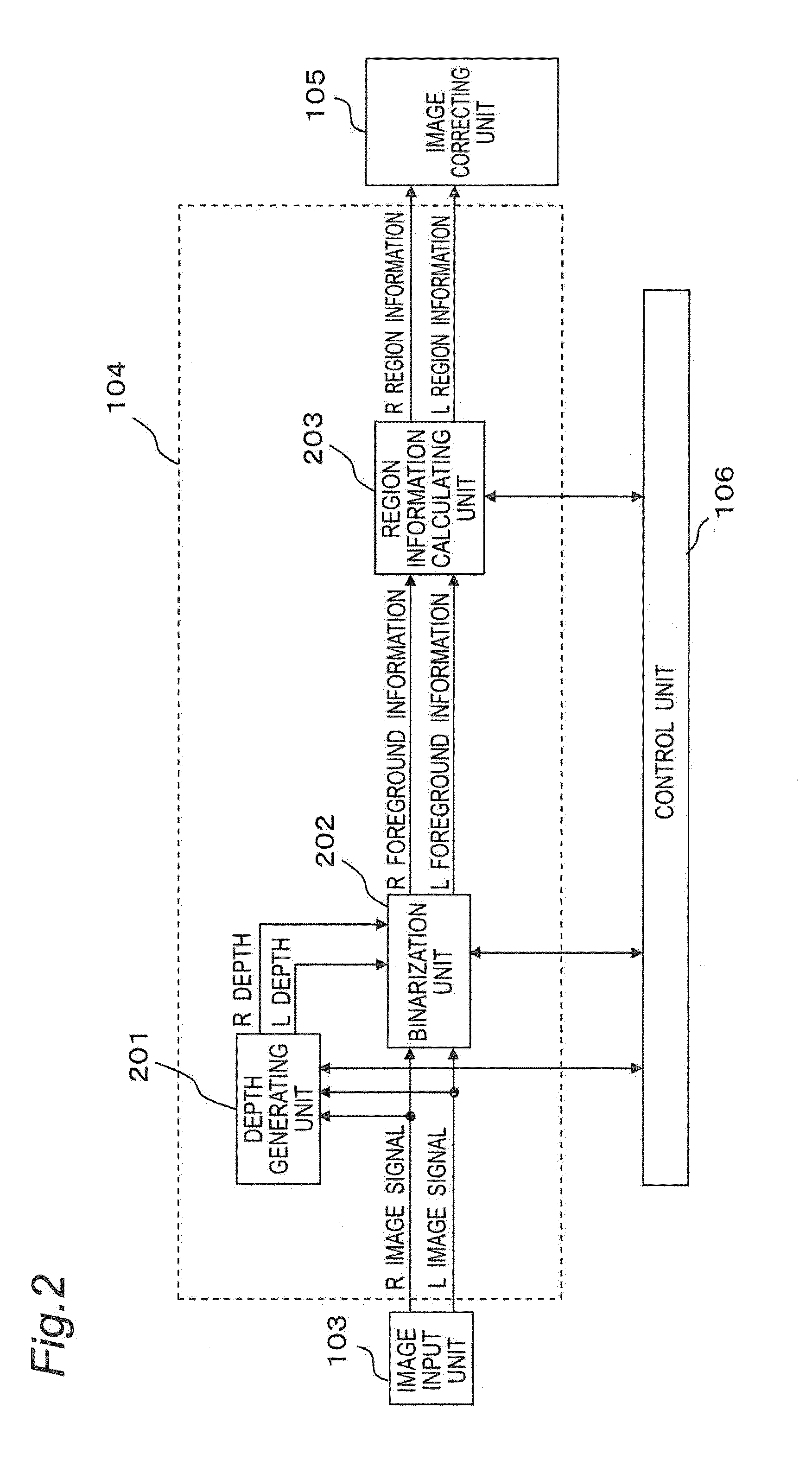Stereoscopic image processing apparatus, stereoscopic image processing method, and stereoscopic image processing program
- Summary
- Abstract
- Description
- Claims
- Application Information
AI Technical Summary
Benefits of technology
Problems solved by technology
Method used
Image
Examples
first embodiment
1. First Embodiment
Table of Contents
[0045]1. First Embodiment
[0046]1.1. Configuration of a Stereoscopic Imaging Apparatus
[0047]1.2 Specific Configuration of the Region Extracting Unit
[0048]1.3 Specific Configuration of the Image Correcting Unit
[0049]1.4 Generation Process of the Depth Information
[0050]1.5 Binarization Process
[0051]1.6 Calculation Process of Breadth Information
[0052]1.7 Generation Process of the Parallax Signal
[0053]1.8 Coordinate Transformation Process
[0054]1.8.1 Extension Mode
[0055]1.8.2 Compression Mode
[0056]2. Second Embodiment
[0057]3. Third Embodiment
[0058]4. Fourth Embodiment
[0059]5. Effects and the Like
[0060]6. Other Embodiments
[0061]100>
[0062]A configuration of a stereoscopic imaging apparatus (stereoscopic image processing apparatus) according to the present embodiment will be described below with reference to the drawings.
[0063]FIG. 1 is a block diagram illustrating an outline configuration of a stereoscopic imaging apparatus according to the present embodi...
second embodiment
2. Second Embodiment
[0224]In the above described embodiment, the region information calculating unit 203 may change the calculating operation of the width information according to the acquired L depth information or R depth information.
[0225]For example, in calculating the width information, the region information calculating unit 203 operates not to count a pixel for which the region information calculating unit 203 has acquired the L depth information or R depth information exceeding a predetermined threshold. That is, the region information calculating unit 203 assumes that it needs not to resume the depth (thickness) of a subject farther than a predetermined fixed position, thus, calculates the width information of the subject so as not to perform the correction process for giving the above described roundness to the subject.
[0226]The region information calculating unit 203 performs that kind of process because a distant view generally has a poor stereoscopic effect and therefor...
third embodiment
3. Third Embodiment
[0227]In the above described embodiments, the correction process is performed for increasing the parallax for the wider image.
[0228]However, on the condition that the correction process is performed on stereoscopic view images of a subject which is short in the vertical direction like a subject stretching out his arms sideways illustrated in FIG. 20, the positions of the hands are fixed extremely deep in the background so that the image may be perceived as unnatural. Generally, most objects which are short in the vertical direction and long in the horizontal direction in images may have a little thickness in fact.
[0229]By taking account of that tendency, in the present embodiment, the correction process for increasing the parallax is not performed on a part of the extracted subject region which has a length in the vertical direction as long as or less than a predetermined value, i.e., a part which is short in the vertical direction. Specifically, the region inform...
PUM
 Login to View More
Login to View More Abstract
Description
Claims
Application Information
 Login to View More
Login to View More - R&D
- Intellectual Property
- Life Sciences
- Materials
- Tech Scout
- Unparalleled Data Quality
- Higher Quality Content
- 60% Fewer Hallucinations
Browse by: Latest US Patents, China's latest patents, Technical Efficacy Thesaurus, Application Domain, Technology Topic, Popular Technical Reports.
© 2025 PatSnap. All rights reserved.Legal|Privacy policy|Modern Slavery Act Transparency Statement|Sitemap|About US| Contact US: help@patsnap.com



